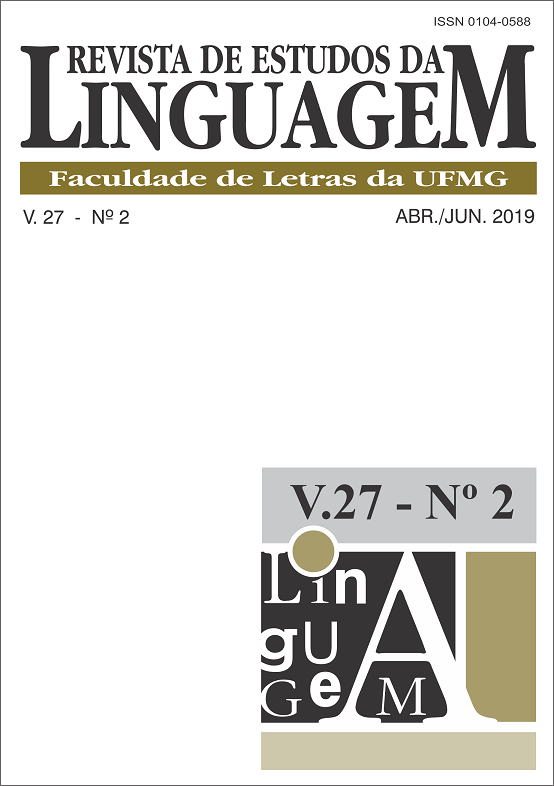Da posição do verbo temático em cinco variedades ibéricas / On the position of the thematic verb in five Iberian varieties
DOI:
https://doi.org/10.17851/2237-2083.27.2.737-770Keywords:
movimento do verbo, Cartografia Sintática, hierarquia de Cinque, línguas ibéricas, verb raising, Syntactic Cartography, Cinque hierarchy, Iberian languages.Abstract
Resumo: O trabalho investiga a subida do verbo em duas línguas ibéricas: o português – em suas variedades brasileira e moçambicana – e o espanhol – em suas variedades colombiana, venezuelana e o peruana. Recorre à proposta cartográfica de Cinque (1999) para determinar, em cada variedade, a posição de quatro formas do verbo temático (o infinitivo, o gerúndio, o particípio passado ativo e o verbo finito) entre os oito advérbios mais baixos da Hierarquia Universal. Os dados foram obtidos por meio de julgamentos de gramaticalidade de sentenças envolvendo quatro padrões de ordenação da forma verbal mencionada relativamente a um dos oito advérbios mais baixos e o objeto do verbo. Há variação intralinguística (relativamente à altura a que cada forma verbal sobe, na hierarquia de Cinque) e interlinguística (se compararmos as diferentes alturas a que cada forma verbal sobe nas diferentes línguas consideradas). O exame dos dados favorece um abandono do movimento nuclear (para a sintaxe da subida do verbo), em proveito tão somente da assunção de movimentos sintagmáticos.
Palavras-chave: movimento do verbo; Cartografia Sintática; hierarquia de Cinque; línguas ibéricas.
Abstract: This work investigates the issue of verb raising in two Iberian languages (Portuguese and Spanish), by taking into account data from Brazilian and Mozambican Portuguese, and Colombian, Venezuelan and Peruvian Spanish. To achieve that goal, it turns to the cartographic analysis of Cinque (1999) to determine, in those languages, the position of four distinct forms of the thematic verb (the infinitive, the gerund, the active past participle and the finite verb) among the eight lowest adverbs of the Universal Hierarchy. The data were collected on the basis of grammaticality judgment tasks. The corpus is composed of sentences involving four order patterns with the combination of one adverb, the object and the verb. There is intralinguistic variation (relative to the height where each verb form goes within the Cinque hierarchy) and interlinguistic (if we compare the different heights where each verb form stops in each language). An examination of the data favors an analysis of Verb raising in terms of phrasal movements, with an abandonment of head movements.
Keywords: verb raising; Syntactic Cartography; Cinque hierarchy; Iberian languages.





